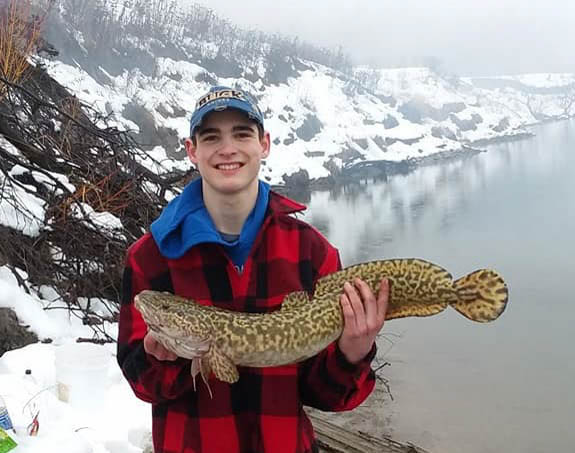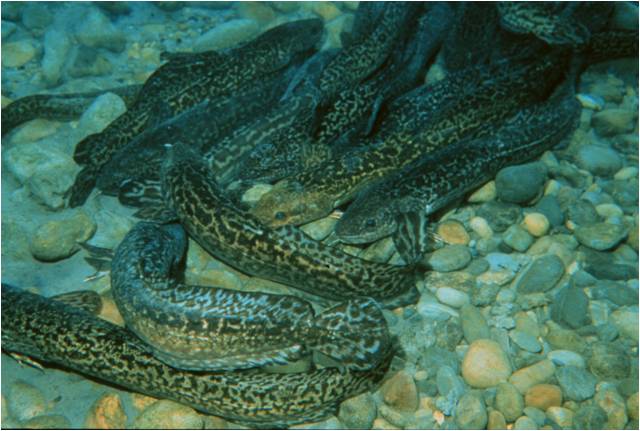
For much of the year, most burbot in the Kootenai River system reside in the deep, slow flowing pools or in the deep, cold waters of Kootenay Lake in British Columbia. But once February arrives, burbot rapidly begin transitioning to spawning mode and start moving to shallower water in the river and its tributaries.
During this time, they are more accessible to anglers compared to any other time of year.
Burbot migration and spawning must be highly synchronized in order to successfully reproduce. Unlike salmon and trout, burbot don’t build nests. They group together in “spawning balls” and eggs are fertilized in the water column before drifting down to the river bottom.
Fisheries biologists are on the lookout for burbot in Idaho from December to the end of March every year. The number of adults detected has been consistently highest from mid-February to mid-March since the sampling program began in 1992.
Spawning takes place not only in the main channel of the river but also in tributaries like Deep, Smith and Boundary creeks, along with many others. Fisheries biologist T.J. Ross recommends anglers try fishing confluence zones where tributaries and the mainstem Kootenai River meet. “These areas have the types of substrates burbot prefer to spawn over and are potentially burbot hotspots” said Ross.

Cracking the ling cod code
Burbot are the only freshwater cod species in North America. They are also known as ling, lawyers, leopards and eelpout.
The Kootenai River is the only waterbody in Idaho where burbot are native. Since the Idaho Fish and Game Commission reopened the fishery in 2019, the angling community is collectively relearning how to hook up on burbot.
Researchers estimate 500-700 burbot were caught in the first year of the reopened fishery. So far, harvest during the 2020 season appears to be similar to last year.
The species is a common gamefish in the upper Midwest and Alaska, where they are fished through the ice. However, fishing open water on the flowing Kootenai is a very different game.
Flows fluctuate with power operations at Libby Dam. Flowing water prevents ice from consistently forming, ruling out the more traditional ice-fishing approach to catching burbot used back east.
As if finding the fish from the shore or a boat wasn’t challenging enough, burbot are most active at night, adding yet another layer of complexity to burbot fishing on the Kootenai.
But the rewards can be great, as fish up to 35 inches and 13.5 pounds have been caught. On average, anglers are reporting catching burbot in the 18-24 inches and 2 to 4 pound range. As a cousin to marine cod, burbot are excellent table fare with white, mild meat.
Finding a bait that works
Burbot are predatory fish, often eating things like minnows, crayfish or even each other. Therefore fresh, meaty bait is commonly used to attract burbot.
“We see a lot of folks using cut bait, worms or shrimp, with many folks reporting that native peamouth chub is the best bait around” reports Ross. The fish use their one long chin “whisker”, or barbel to probe along the river bottom so fishing bait from the bottom is usually the best place to start.
In 2004, only an estimated 50 fish remained in the entire Kootenai River. It is now estimated that 40,000-50,000 fish occupy the system.
With the help of state, tribal, international, and federal partners and a state-of-the-art hatchery run by the Kootenai Tribe of Idaho, the return of the burbot fishery signaled a major conservation milestone. There is a growing number of anglers hitting the Kootenai and trying to figure out this unique and rewarding fishery.
For an in-depth look at burbot recovery in the Kootenai River check out this video:

